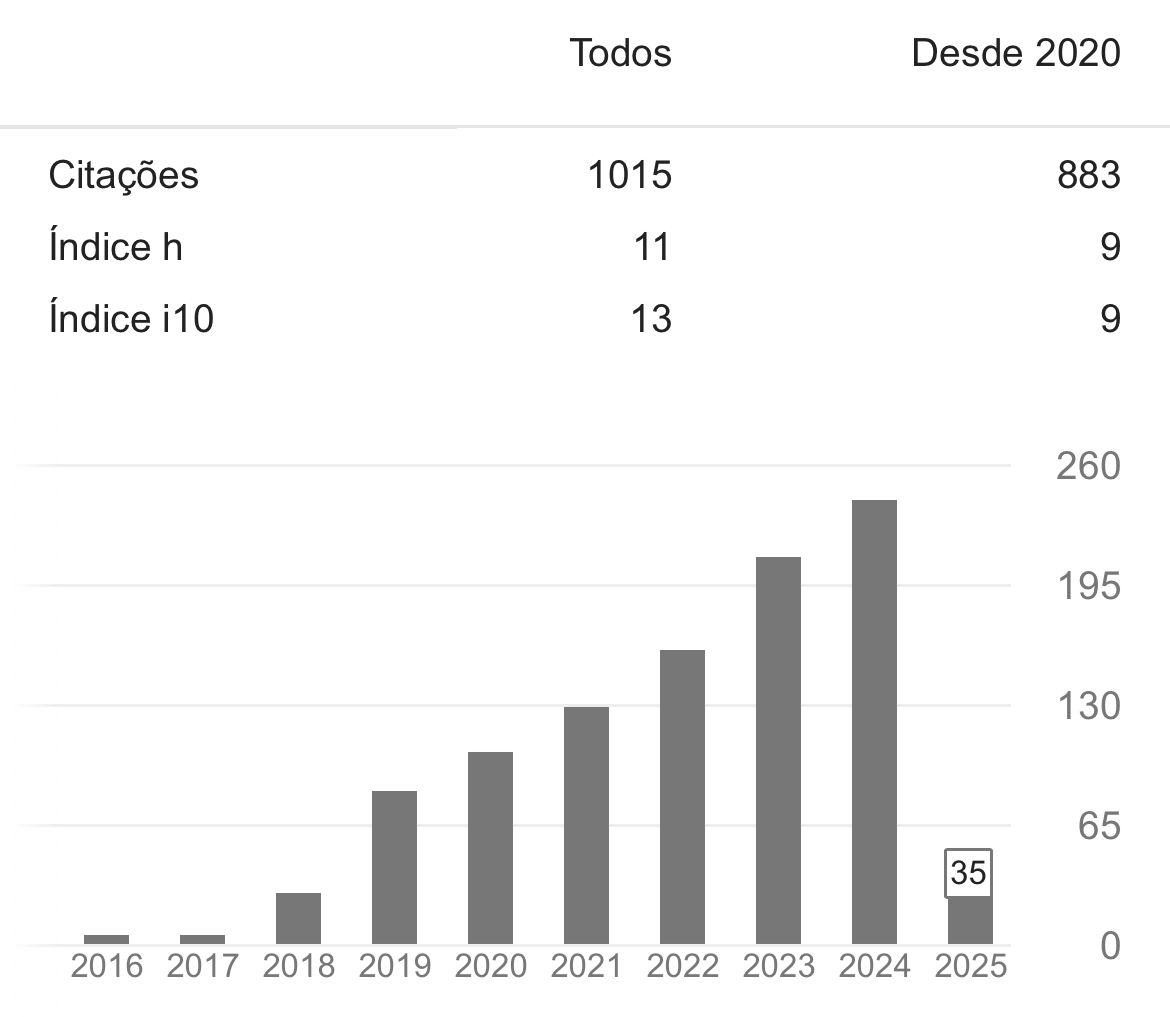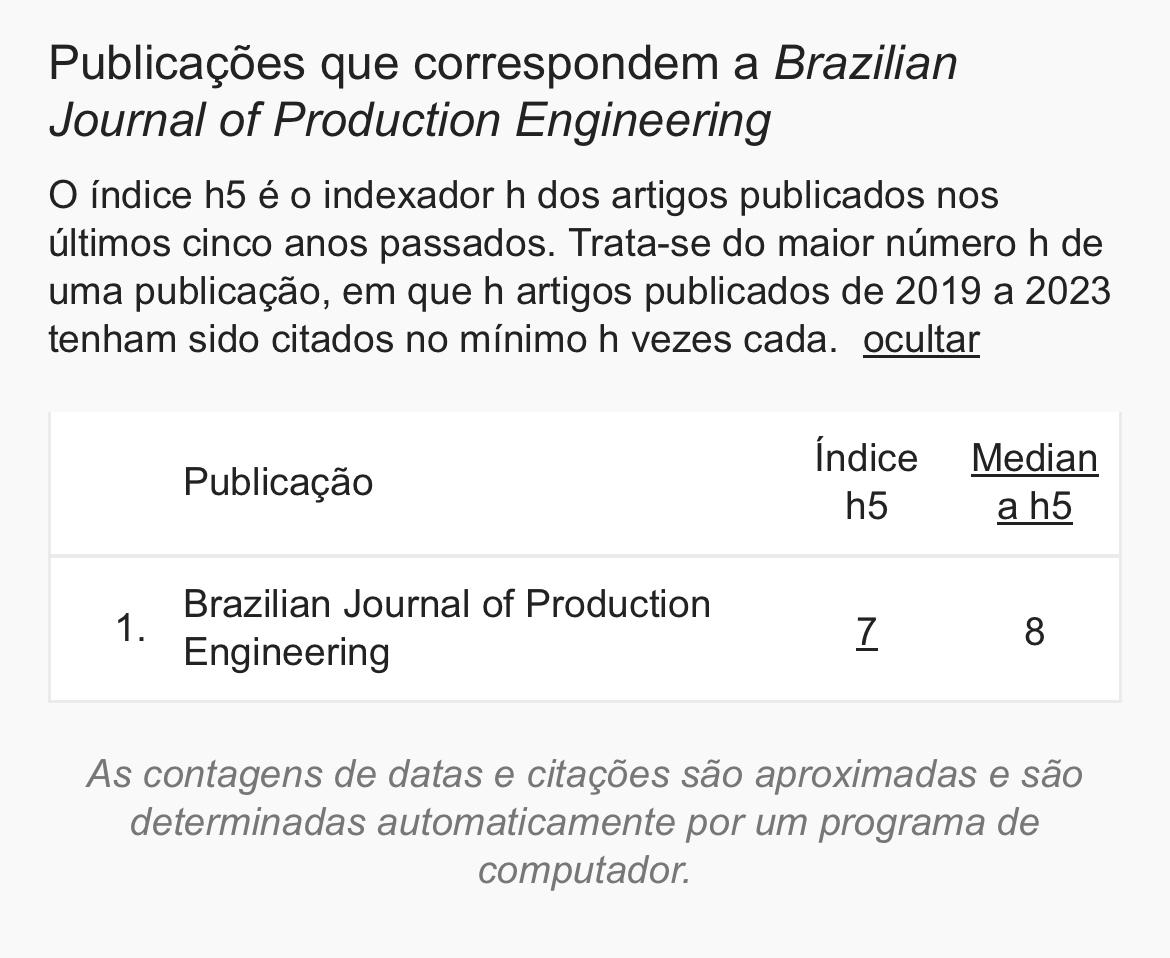Evaluation of the influence of additives in water-based drilling fluid with applicability to shales calumbi formation
DOI:
https://doi.org/10.47456/bjpe.v8i3.37896Keywords:
Drilling fluids, inhibitors, reactive formations, rheologyAbstract
Fluids are essential in the drilling stage of oil well. The composition changes according to application. To improve the efficiency, the industry investigates different additives for drilling muds with applicability in reactive formations such as the Calumbi Formation. Thus, this work proposes a formulation of an aqueous based drilling fluid with the objective of evaluate the reactivity in shales of the Calumbi Formation. The addition of the addition of inhibitors additives was evaluated (potassium chloride and cationic polymer) and viscosifiers (xanthan gum and carboxymethylcellulose) was evaluated. Rheological properties and fluid wettability measurements were performed according to specific standards. The results showed that the simultaneous use of potassium chloride and cationic polymer showed low reactivity in the Calumbi Formation shales. The presence of the xanthan gum promoted a smaller interaction between fluid and rock. The proposed formulation has characteristics compatible with a formation, that has great relevance to the Sergipe-Alagoas Basin.
Downloads
References
Anderson, R. L., Ratcliffe, I., Greenwell, H. C., Williams, P. A., Cliffe, S., & Coveney, P. V. (2010). Clay swelling—a challenge in the oilfield. Earth-Science Reviews, 98(3-4), 201-216. https://doi.org/10.1016/j.earscirev.2009.11.003
Annis, M. R. & Smith, M. V. (1996). Drilling Fluids Technology. Exxon Company, United States.
API RP, A. (2009). Recommended practice for field testing water-based drilling fluids. In API Recommentation 13B-1, ISO 10414: 2001.
ASTM D 5890 (2002). American Society for Testing Materials. Swell Index of Clay Mineral Component of Geosynthetic Clay Liners.
Azambuja Filho, N. C. (2020). Guidebook to the rift-drift sergipe-alagoas basin.
Beg, M., Sharma, S., & Ojha, U. (2018). Effect of cationic copolyelectrolyte additives on drilling fluids for shales. Journal of Petroleum Science and Engineering,161, 506-514. https://doi.org/10.1016/j.petrol.2017.12.009
Bentrad, H., Esmael, A., Nouar, C., Lefevre, A., & Ait-Messaoudene, N. (2017). Energy growth in Hagen–Poiseuille flow of Herschel–Bulkley fluid. Journal of Non-Newtonian Fluid Mechanics, 241, 43-59. https://doi.org/10.1016/j.jnnfm.2017.01.007
Dak, M., Verma, R. C., & Sharma, G. P. (2006). Flow characteristics of juice of “Totapuri” mangoes. Journal of Food Engineering, 76(4), 557-561. https://doi.org/10.1016/j.jfoodeng.2005.06.002
Deshpande A., Krishnan J. M., & Kumar, P. B. S. (2010). Rheology of Complex Fluids. Springer.
Feijó, F. J. (1994). Bacias de Sergipe-Alagoas. Boletim de Geociências da Petrobras.
Fiorot, G. H., & de Freitas Maciel, G. (2019). Free-surface laminar flow of a Herschel–Bulkley fluid over an inclined porous bed. Journal of Non-Newtonian Fluid Mechanics, 272(7), 104164. http://dx.doi.org/10.1016/j.jnnfm.2019.104164
Fornasier, F. C., Campo, M., Djuric, A., & Obando, D. M. (2017, May). Designing environmentally conforming drilling fluids: Challenges and considerations in Latin America. In SPE Latin America and Caribbean Petroleum Engineering Conference. OnePetro.
Forsans, T., Durand, C., Onaisi, A., Audibert-Hayet, A., & Ruffet, C. (1995). Influence of Clays on Borehole Stability: a Literature Survey Part One: Occurence of Drilling Problems. Physico-Chemical Description of Clays and of Their Interaction with Fluids. Revue de l'Institut Français du Pétrole, 50(2), 187-218.https://doi.org/10.2516/ogst:1995017
Gianni, R., Fusi, L., & Farina, A. (2022). Non stationary channel flow of a Herschel-Bulkley fluid. Journal of Mathematical Analysis and Applications, 510(1) 126002. https://doi.org/10.1016/j.jmaa.2022.126002
Hollis, C., Vahrenkamp, V., Tull, S., Mookerjee, A., Taberner, C., & Huang, Y. (2010). Pore system characterisation in heterogeneous carbonates: An alternative approach to widely-used rock-typing methodologies. Marine and Petroleum Geology, 27(4), 772-793. https://doi.org/10.1016/j.marpetgeo.2009.12.002
Ji, G., & Zhu, J., (Eds.). (2020). Computational Fluid Dynamics Simulations. IntechOpen. https://doi.org/10.5772/intechopen.83278
Kelessidis, V. C., Maglione, R., Tsamantaki, C., & Aspirtakis, Y. (2006). Optimal determination of rheological parameters for Herschel–Bulkley drilling fluids and impact on pressure drop, velocity profiles and penetration rates during drilling. Journal of Petroleum Science and Engineering, 53(3-4), 203-224. https://doi.org/10.1016/j.petrol.2006.06.004
Khodja, M., Khodja-Saber, M., Canselier, J. P., Cohaut, N., & Bergaya, F. (2010). Drilling fluid Technogy: performances and environmental considerations. In: Fuerstner I (ed) Product and Services; From R&D to final solutions. Intechopen, Croatia, 228-255.
Ksiazek, M., Sobczak, N., Mikulowski, B., Radziwill, W., & Surowiak, I. (2002). Wetting and bonding strength in Al/Al2O3 system. Materials Science and Engineering: A, 324(1-2), 162-167. https://doi.org/10.1016/S0921-5093(01)01305-3
Lambourne, R., & Strivens, T. A. (Eds.). (1999). Paint and surface coatings: theory and practice. Elsevier.
Lucena, D. V., & Souto, C. M. R. A. (2016). Hidratação de Formações Reativas de Regiões Petrolíferas: Uma Breve Revisão. RunPetro, 4(2), 23-32. https://repositorio.unp.br/index.php/runpetro/article/view/1291
Lucena, D. V., Amorim, L. V., & Lira, H. L. (2016). Reactive analysis of shales from Recôncavo Baiano. Cerâmica, 62, 163-169. https://doi.org/10.1590/0366-69132016623621976
Machado, J. C. V. Reologia e escoamento de fluidos-ênfase na indústria de petróleo; 2° edição. Editora Interciência, 30-31.
Martins, R. M., & Bombard, A. J. F. (2012). Rheology of fresh cement paste with superplasticizer and nanosilica admixtures studied by response surface methodology. Materials and structures, 45(6), 905-921. https://doi.org/10.1617/s11527-011-9807-9
Montilva, J. C., Van Oort, E., Brahim, R., Quintero, L., Dye, W., McDonald, M., ... & Luzardo, J. P. (2007, November). Using a low-salinity high-performance water-based drilling fluid for improved drilling performance in Lake Maracaibo. In SPE Annual Technical Conference and Exhibition. OnePetro.
Nascimento, R. C. A. de M., Amorim, L. V., Lira, D. S., & Lira, H. L. (2010). O fenômeno de prisão diferencial: Uma revisão da literatura. Revista Eletrônica de Materiais e Processos, 5(2) 76-87. http://www2.ufcg.edu.br/revista-remap/index.php/REMAP/article/viewFile/188/319
Niu, M., Wang, S., Han, X., & Jiang, X. (2013). Yield and characteristics of shale oil from the retorting of oil shale and fine oil-shale ash mixtures. Applied Energy, 111, 234-239. https://doi.org/10.1016/j.apenergy.2013.04.089
Nóbrega, K. C., & Amorim, L. V. (2015). Influence of the Molar Mass of CMC in the Rheological Behavior and of Filtration of Clay Suspensions. Cerâmica, 61, 399-408. https://doi.org/10.1590/0366-69132015613601904
Petrobrás. (1998). Ensaio de viscosificante para fluido de perfuração base de água na exploração e produção de petróleo. Método, (2604).
Petrobras. (2009). Argila aditivada para fluido de perfuração a base de água na exploração e produção de petróleo. Método (2605).
Piau, J. M. (1996). Flow of a yield stress fluid in a long domain. Application to flow on an inclined plane. Journal of Rheology, 40(4), 711-723. https://doi.org/10.1122/1.550794
Qian, P., Guang, H., Xihua, Z., Cong, C., Zhaolong, G., Shujiao, S., ... & Jie, Y. (2021). Organic geochemistry, sedimentary environment, and organic matter enrichment of limestone-marlstone rhythms in the middle Permian northern Sichuan Basin, China. Marine and Petroleum Geology, 134, 105306. https://doi.org/10.1016/j.marpetgeo.2021.105306
Queiroz Neto, J. C., Biscaia Jr, E. C., & Petri, D. F. (2007). Adsorption behavior of polymer-based drilling fluids on SiO2. Química Nova, 30, 909-915. https://doi.org/10.1590/S0100-40422007000400028
Sengupta, S., & De, S. (2019). Couette–Poiseuille flow of a Bingham fluid through a channel overlying a porous layer. Journal of Non-Newtonian Fluid Mechanics, 265, 28-40. https://doi.org/10.1016/j.jnnfm.2019.01.002
She, H., Hu, Z., Qu, Z., Zhang, Y., & Guo, H. (2019). Determination of the hydration damage instability period in a shale borehole wall and its application to a Fuling shale gas reservoir in China. Geofluids, 1-17. https://doi.org/10.1155/2019/3016563
Silva, I. A., Silva, D. S., Buriti, B. M. A. B., Menezes, R. R., Neves, G. A., & Ferreira, H. C. (2019). Influence of Ca2+ in the rheological properties and filtration of bentonitic clay dispersions in aqueous drilling fluids. Cerâmica, 65, 216-221. http://dx.doi.org/10.1590/0366-69132019653742619
Silva, I. A., de Sousa, F. K. A., Menezes, R. R., Ferreira, H. S., Neves, G. D. A., & Ferreira, H. C. (2018). Influence of lithium (Li+), sodium (Na+) and potassium (K+) on the rheology of Brazilian bentonites for use in water-based drilling fluids. Cerâmica, 64, 109-119. http://dx.doi.org/10.1590/0366-69132018643692267
Thomas, J. E., Triggia, A. A., Correia, C. A., Verotto Filho, C., Xavier, J., & Machado, J. (2004). Fundamentos de Engenharia de Petróleo. ed. Interciência: Petrobrás, Rio de Janeiro, Brasil.
Vale, M. M., Curbelo, F. D. S., Braga, G. S., & Garnica, A. I. C. (2017). Estudo do comportamento reológico de fluidos de perfuração base água: efeito da concentração de NaCl. HOLOS, 1(33), 214-228. https://doi.org/10.15628/holos.2017.5162
Van Oort, E. (2003). On the physical and chemical stability of shales. Journal of Petroleum Science and Engineering, 38(3-4), 213-235. https://doi.org/10.1016/S0920-4105(03)00034-2
Vidal, E. L. F., Felix, T. F., Garcia, R. B., Costa, M., & Girão, J. H. S. (2007, October). Aplicação de novos polímeros catiônicos como inibidores de argila em fluidos de perfuração à base de água. In Instituto Brasileiro de Petróleo e Gás. Anais do 4º Congresso Brasileiro de P&D em Petróleo e Gás (pp. 21-24).
Warr, L. & Berger, J. (2007). Hydration of bentonite in natural waters: Application of “confined volume” wet-cell X-ray diffractometry. Physics and Chemistry of the Earth, Parts A/B/C, 32(1-7), 247-258. https://doi.org/10.1016/j.pce.2006.02.048
Yuan, Y. & Lee, T. R. (2013). Contact angle and wetting properties. In Surface science techniques (pp. 3-34). Springer, Berlin, Heidelberg. https://doi.org/10.1007/978-3-642-34243-1_1
Downloads
Published
How to Cite
Issue
Section
License
Copyright (c) 2022 Brazilian Journal of Production Engineering

This work is licensed under a Creative Commons Attribution-NonCommercial-ShareAlike 4.0 International License.

















































































